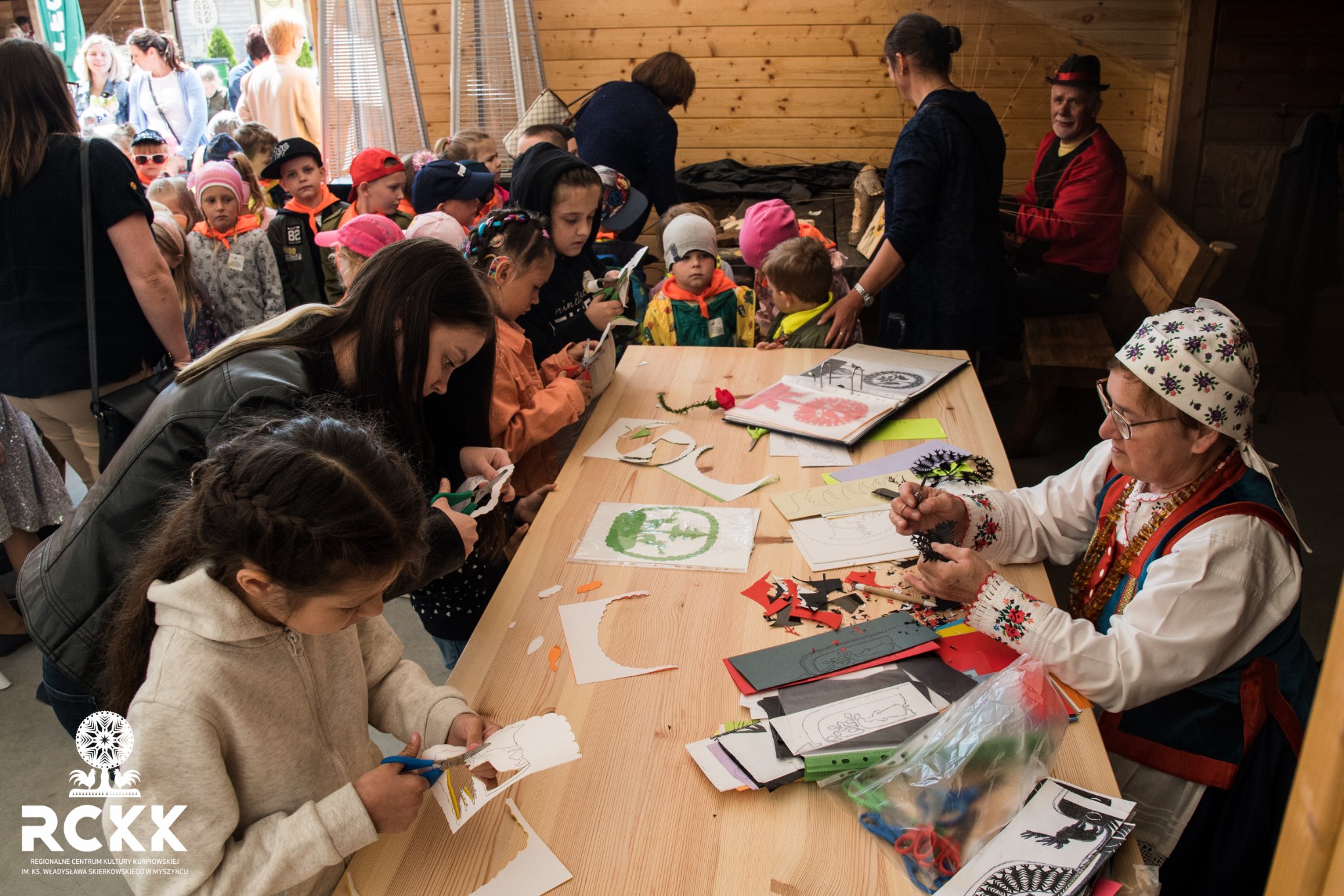
The projects implemented under the Cross-border Cooperation Programme Poland-Belarus-Ukraine 2014-2020 are not just indicators, budgets, reports and payments. Although these are inseparable elements, above all each project hides the specific ideas, values and dreams of people implementing it, as well as the stories of those who benefited from their implementation.
We want to bring some of them closer to you by the "Project stories" – the cycle which presents their more human (but also animal – as in the 1st, 13th and 14th episodes) dimension of our selected projects. We invite you to read!
![]()
Do you know what a “boćón”, “źeźórka”, “bełk”, “źedro”, “bźédak”[1] is? If not, go to Kurpie, the north-eastern part of the Polish Masovia. The two Masovian primeval forests, Puszcza Zielona (Green Forest) and Puszcza Biała (White Forest), are home to exceptional people who speak the beautiful Kurpish dialect. It bears traces of ancient times and of the Mazovian settlement. It has also developed unique handicrafts, crafts, music, instruments, dances, costumes and cuisine – folklore that even the untrained eye and ear can recognise from other regions of Poland.
This adventure with handicrafts began when I was a child, because my mother made flowers and my aunt as well. And so I was curious about those flowers, that paper, and I also made with them together
- Michalina Dębowska, who has been connected with the Kurpish region since she was born, begins her story.
It is not only the Kurpish dialect that is characteristic, but also the local cottages, cut-outs, amber ornaments, crepe paper flowers, or the famous decorative palms prepared for Palm Sunday. The surrounding forests and marshes, which acted as a natural barrier cutting off the area from the rest of the world, contributed to the preservation of this ancient and unique culture.
Equally unique is the culture of the nearby Volyn region in the Ukraine, with its beautiful costumes, embroidery, singing, pottery, wickerwork or ladyshka, kotyk and korovai[2]... It is therefore no surprise that, drawing on two such rich sources of tradition, folklore enthusiasts from both sides of the border decided to write a joint project entitled "Development of Polish-Ukrainian cooperation based on cultural heritage" (PROFolk). They set themselves the goal of preserving traditional songs, melodies, dances, folk instruments, as well as crafts and handicrafts, and above all their creators, from oblivion.
Handicrafts are my life for me, I would get up at night and chisel – says Michalina in the meantime. As a result, she has someone to share her passion with: – Sometimes women even older than me want me to show them how it's done, because some of them haven't dealt with it. And I even do workshops for children.
Live workshops are one of the most effective ways of passing on disappearing crafts to the next generation, which is why an event entitled "Vanishing Professions" organised in the "Kurpiowska Kraina" (“Kurpish Land”) in Wydmusy was an important part of the project. As part of the Polish-Ukrainian Friendship Festival, folk art workshops were held with the participation of 15 artists. There was a show of Kurpish art performed by the "Kurpiowszczyzna" (Kurpish region) Folk Group, and the Ukrainian folklore was presented by the "Dumka" Song and Dance Ensemble from Górowo Iławeckie - recalls Katarzyna Olszewska, the project coordinator.
Mariusz Pliszka, manager of the "Kurpiowszczyzna" ensemble, conducted dance workshops for children:
At the workshop we mainly focused on two fairly easy Kurpish dances – these were Stara Baba (Old Woman) and Fafur, as well as a game the kids used to play, which was Zajączek (Bunny).
The project also produced a joint CD of songs and melodies from the Kurpish and Volyn regions.
Interest in Kurpish culture is growing. This can be seen from the attendance at our classes held at the Regional Centre of Kurpish Culture – notes Mr Mariusz – You can see and hear this authentic folk culture, but also taste Kurpish dishes such as: rejbaki, żurki, fafernuchy...
Similar events with an equally large audience took place on the Ukrainian side in Lutsk, the capital of the Volyn region. A folklore album, a map with folklore heritage routes, ethnographic classes in Wola Uhruska and a cross-border festival "Ethnic culture – a force that unites" were also produced.
Meanwhile, other seeds of the project, equally valuable and not measurable by any indicators, are also sprouting. Just listen to the simple words of Ms Michalina:
I made such a blue and yellow palm tree, a Ukrainian one. Because now there is a war in Ukraine, I will at least make a Ukrainian palm...
More about the project can be found here
[1] In Kurpish dialect: stork, squirrel, belly, bucket, poor man
[2] In the Volyn region respectively: jug, a potato dish and a type of cake
Was this page useful?


